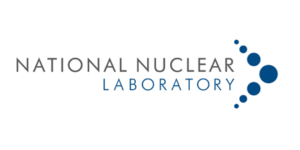
(C.1) Remote deployment methods to enable characterisation, inspections, deplanting and demolition.
The ability to identify “what” is “where” within an enclosed radiological environment enables proportionate post operational clean out (POCO) and decommissioning plans to be produced. The ability to take measurements at the workface, within vessels, pipes and a cell will markedly reduce the burden upon existing labs and minimise the need for samples, coupons etc.
There is a need to focus on pipeline deployment methods. The navigation of pipelines is a problem yet to be solved, particularly in long (40 m), thin (2 inch diameter) pipes. In addition, there is a need to deploy inspection devices, decontaminants or other tools both inside and outside of the pipework.
Development in this area has the potential to significantly reduce radioactive waste volumes, by enabling easier characterisation and sentencing to underpin decisions on management and decommissioning of inaccessible structures. This challenge also extends to being able to access/ characterise below ground marine and buried discharge pipelines to determine the end states and demonstrate the residual risk. To support such activities, it is realised that remotely operated vehicle (ROV) or unmanned aerial vehicle (UAV) technology may be required.
Further to the above, the scope of deplanting and demolition covers activities such as the size reduction of structural items, potentially metals and/or concrete, that could be undertaken in high-radioactivity and/or high alpha areas, for example, to support reactor decommissioning activities. As such, technologies are required that can undertake such size reduction activities to potentially support the removal of items and/or the packaging of items to reduce dose to workers, to achieve and enhance the size reduction of the wastes in question and to reduce the generation of secondary wastes, whilst being compliant with operating in a high hazard environment and the intended disposal routes.
A specific area of consideration would be the use of conventional demolition techniques in nuclear decommissioning. Another is research into novel and innovative demolition techniques that could be used for future decommissioning plans/ works, such as bio shield demolition. A third is combining robotics and AI with conventional demolition techniques.
A key consideration for all technologies researched under this topic (and others) is the radiation tolerance of the equipment and the ability to decontaminate following usage.
(C.2) Asbestos management
Asbestos management is a priority area to overcome the challenges relating to retrieval and packing/ disposal as part of decommissioning plant and structures e.g. reactor vessels. For Magnox, it has the potential to be the dominant risk to workers, given the volume of material and its friable nature. Disposal options i.e. melting or chemical destruction vs landfill are under investigation, but there is a significant R&D gap in areas such as remote retrieval and hazard management aspects to facilitate decommissioning.
There is also the challenge for disposability, where asbestos may have low levels of radioactive contamination, and so would be consigned to the Low-Level Waste Repository (LLWR). Again, there would be a preference for asbestos-containing materials (ACMs) to be in a non-friable form to meet the LLWR safety case disposability requirements. (Note above where alternative approaches are being explored, the goal will be to remove the hazard).
(C.3) Managing ageing assets and conventional decommissioning hazards
Given the long timescales for decommissioning, there is a need to manage and maintain plant, buildings and structures until they can be decommissioned. The condition management of aging assets covers material/ structure degradation, including aging steelwork and reinforced concrete, which is an area that would benefit from R&D, as well as understanding the balance between using the condition and predicted condition of assets to inform decommissioning priority.
Particular areas of interest are:
- Long-term monitoring of ageing assets using robotic/ remote platforms.
- Condition based management of ageing assets (based upon the monitoring data and application of AI).
- Risk-informed asset management process to support prioritised decommissioning.
(C.4) Sorting & segregation & minimising waste volumes (including graphite)
Segregation of waste to achieve lower waste volumes for disposal e.g. contaminated brick/ concrete.
Application of automated systems e.g. systems which allow quicker identification of wastes. Review the potential to use this technology across the wider NDA estate.
Given the regulatory and government drive for sustainability and zero waste, there is increasing concern regarding disposal of Very Low-Level Waste (VLLW) / Low Activity-Low Level Waste (LA-LLW). One of the barriers to resolving this is the lack of a technology that can be deployed on a large scale for the decontamination of concrete. This prevents reclassification to Out of Scope (OoS) and the potential to open different uses of the material to reduce the focus on disposal.
Methods that allow for the segregation of contamination from a substrate can enable the consolidation of contamination into a smaller, yet more active waste form e.g. Low Level Waste (LLW) to very low volume Intermediate Level Waste (ILW). The methods should also consider size reduction, dismantling and waste handling. Also, improvements in packing efficiencies e.g. compaction, super compaction, cutting techniques, thermal treatments.
There is a huge graphite inventory across the NDA estate destined for a Geological Disposal Facility (GDF). The means to compact to a coal or diamond like material would enable easier handling, or if further reuse could be found e.g. active graphite material could be used to create a C14 battery, which if in a diamond form is a self-calibrating radiation detector.
Research is required to identify which wastes could be suitable for reuse to minimise waste volumes, e.g. feasibility of using VLLW/ LLW as shielding materials for construction in new build or optimising concrete waste for use as infill. This may tie in with graphite reduction/ reuse. A specific subject to be considered is the identification of technologies to increase the beneficial re-use of activated (as opposed to contaminated) metallic components. Understanding whether it is feasible to separate radionuclides from activated metal to utilise conventional routes for re-use.
(C.5) Retrieval of heels and residues/ methods for penetrating vessels and pipework
There are a large number of tanks and associated pipe work/ vaults/ tubes/ sumps/ ponds which are difficult to access, and although bulk volumes can be removed, there is a need for easy removal of any remaining heels and residues. Specifically:
- The means to penetrate vessels and pipework in a secure manner.
- Remote tools for size reduction, dismantling and waste segregation (general waste handling).
- Big challenges arise from all dose rate levels, sludges & solids of different rheology and physical properties.
The integrity of the seal is important to eliminate any release fraction when applied, be water/ chemical proof and functional for several years after insertion to allow further washout of plant etc. Further learning and development of sludges and solids is needed, covering different methods e.g. hydrogen hot tapping, what works well, challenges etc. Again, cell geometry/ environment makes this a challenge and a topic for further research.
(C.6) Coastal monitoring and climate change monitoring during the C&M periods
How we build up a baseline picture then monitor and compare over the Care and Maintenance (C&M) period, looking at climate trends and storm events.
To apply for the scheme, please click here.

